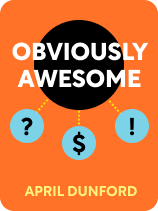

This article is an excerpt from the Shortform book guide to "Obviously Awesome" by April Dunford. Shortform has the world's best summaries and analyses of books you should be reading.
Like this article? Sign up for a free trial here.
What problem do your customers want to solve by using your product? What would your customers do if they didn’t use your product?
April Dunford proposes a 12-step product positioning process—taking you all the way from creating a cross-departmental positioning group to sharing your final positioning across the company—that lets you position any product well. Step 4 in that process is to identify the alternatives to using your product.
Keep reading to learn Dunford’s method of identifying product alternatives.
Identify the Alternatives to Using Your Product
As part of your positioning process, you must figure out together what your product’s real competition is—in other words, what alternative solutions your ideal customers would use if they didn’t have your product, writes Dunford. It’s important to consider what the customer sees as alternative solutions, rather than what you see as product alternatives based on the research of your competition because the customer’s alternative options are the only ones that matter here.
To identify your product’s real competition, ask ideal customers what problem they want to use your product to solve, recommends Dunford. Let’s say you sell a vacuum, and your customers tell you they want to tackle the problem of household dirt. Now ask what other solutions they compare your product to: What would your ideal customers do if they didn’t use your product? For instance, some of your ideal customers purchase an expensive competitor vacuum, but most of your ideal customers simply use a duster instead of your product. Rank your answers to this from least common to most common, and focus more on the common alternatives—in this case, the duster.
| Thinking About Your Customer’s Goal, Not Their Problem In Blue Ocean Strategy, the authors propose a variation on Dunford’s approach to identifying the alternatives to using your products. They suggest you consider the goal the customer uses your product to attain (not the problem they’re using your product to solve). When you think in this way, you might see new alternatives to your product. For instance, you view the problem your customer uses your product to solve as “the problem of a dirty home.” What if you reframe this question to inquire about the customer’s goal? You might see their goal as “achieve a clean living space” or even as “feel more comfortable in my home.” So if your customer’s goal of using your vacuum is to feel more comfortable spending time in their home, they might achieve this not just by cleaning it but possibly by 1) repainting their walls, 2) buying new furniture, or 3) having guests over more often. You likely wouldn’t consider these as alternative solutions to the problem of a dirty house, but these alternative approaches to achieving a goal might lead you to consider viable alternatives to your product. For instance, some cleaning-averse customers might well buy new furniture to make their home nicer rather than spending the time and energy tidying it. This being said, it will likely remain helpful to follow Dunford’s advice to rank the answers to the question about the customer’s goal from least to most common to eliminate unlikely alternatives. For example, few customers will likely consider having more guests over a viable alternative to cleaning the home. |

———End of Preview———
Like what you just read? Read the rest of the world's best book summary and analysis of April Dunford's "Obviously Awesome" at Shortform.
Here's what you'll find in our full Obviously Awesome summary:
- What "positioning" is and why it's so important for marketing
- Three common (and avoidable) mistakes marketers make
- A 12-step process that lets you position any product well






